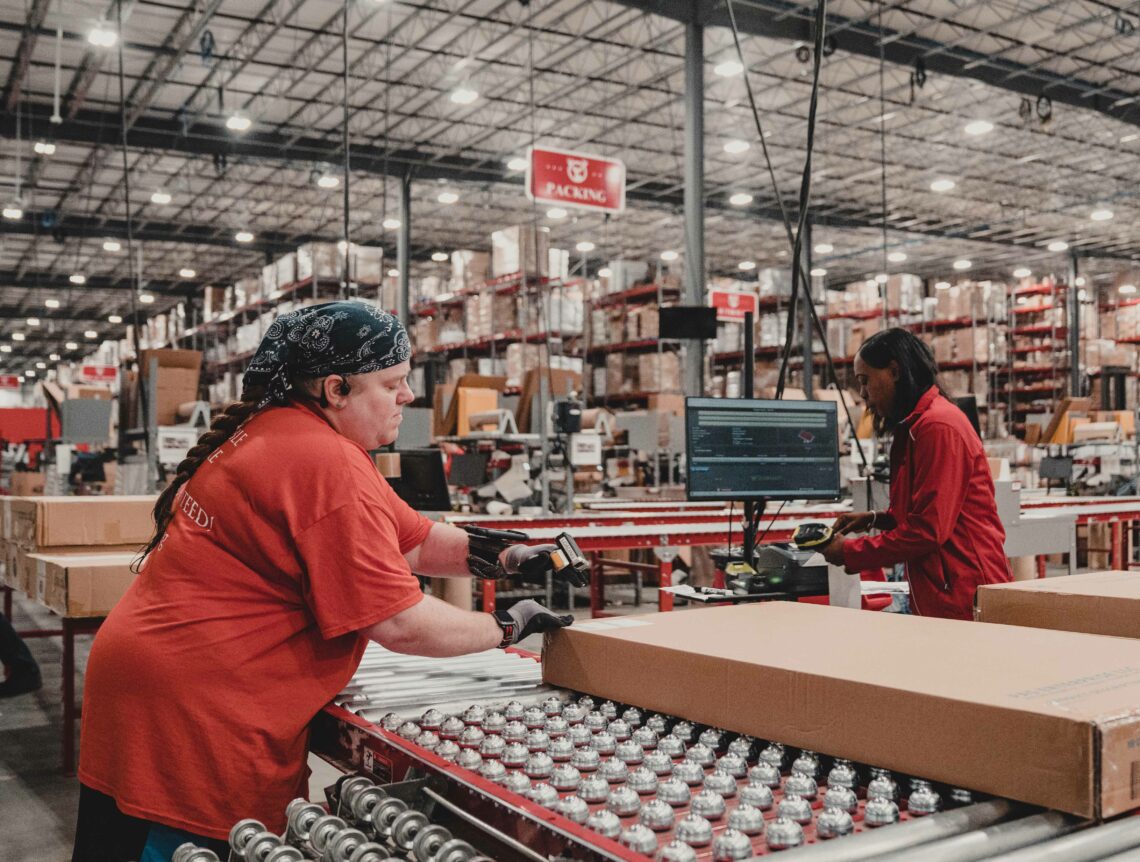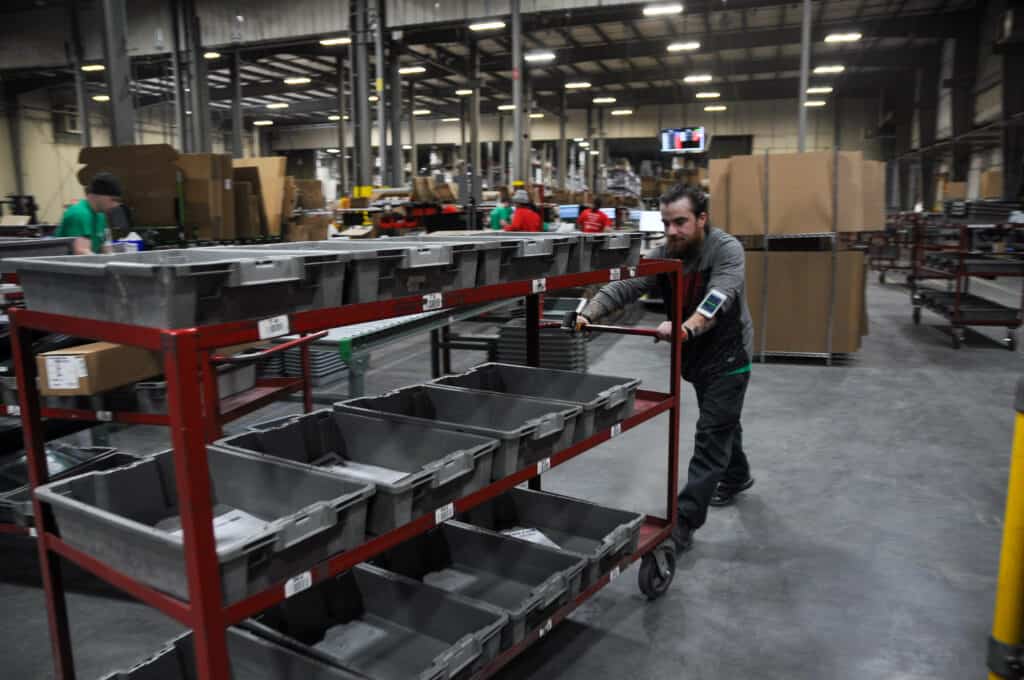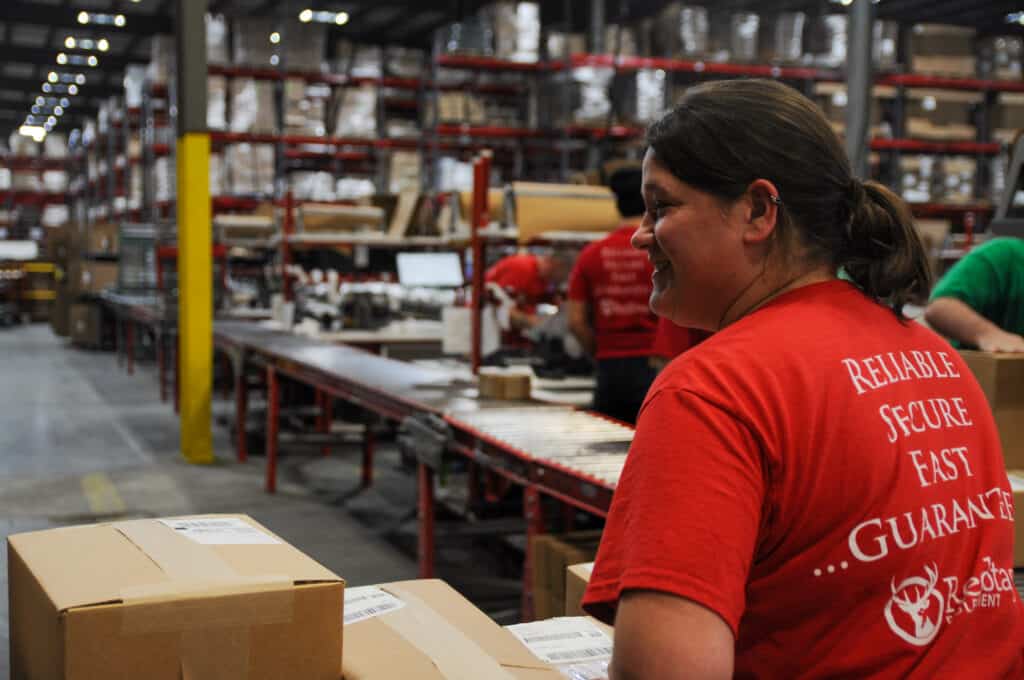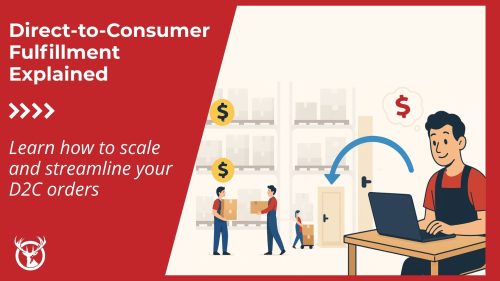If you’ve heard of direct fulfillment, you might have wondered what it means. Isn’t direct fulfillment just — fulfillment? To some extent, that is the case. But, as with many aspects of eCommerce fulfillment, separate companies use the term differently.
Here’s everything you need to know to understand direct fulfillment.

What does direct fulfillment mean?
Direct fulfillment means shipping an order directly to the consumer. If your eCommerce company makes D2C (direct-to-consumer) sales and ships orders to your customers, that’s direct fulfillment. However, if you sell wholesale to other online retailers, you will ship them bulk orders of your products. Those retailers will then store your products and ship out orders to consumers. This model is known as indirect distribution.
Importantly, direct fulfillment also happens when you use a 3PL like Red Stag Fulfillment. That’s because you still own and control the inventory as well as the sales and orders. Our company operates as an extension of your team and does the picking, packing, and shipping of individual orders to customers. You’re still serving customers and managing support while we operate invisibly behind the scenes to help you ensure each sale is a great experience.
What is Amazon Direct Fulfillment?
Amazon Direct Fulfillment is an alternative fulfillment option for its vendors. Amazon originally named this Dropship Central.
You’ll want to note that this is for “vendors” and not “sellers” on Amazon. A seller is an independent eCommerce merchant that lists items for sale in the Amazon marketplace. An Amazon vendor does not list their items on the marketplace. Instead, a vendor is a company that wholesales products to Amazon. They list items as “Sold by Amazon,” and Amazon markets the products to consumers.
In the ordinary course of eCommerce, a vendor ships a wholesale order to Amazon. Amazon warehouses the inventory, picks and packs orders, and handles eCommerce shipping. When inventory runs low, Amazon issues a purchase order and the vendor ships more stock.

Amazon Direct Fulfillment provides a backstop to Amazon fulfillment operations. Instead of marking items as out of stock, a vendor participating in the program can ship products directly to consumers when Amazon runs out.
The Amazon program is similar to drop shipping because the retailer (Amazon) markets products to consumers and, when someone places an order, the manufacturer ships the item. However, it’s not exactly the same because Amazon retains a measure of control over the order. Amazon pays shipping costs, as well as handling customer service and returns.

Who can sign up for Amazon Direct Fulfillment?
Amazon Direct Fulfillment is open to vendors with a U.S. warehouse and the capacity to ship single items to individual customers. You can qualify for this Amazon program if you ship from your warehouse or use 3PL services for order fulfillment.
Amazon can change these requirements and information at any given moment. So, we always recommend you view their website for details and requirements. That said, Red Stag often supports eCommerce companies that use Amazon’s options as one of their sales channels.

Direct Fulfillment vs. drop shipping
People often use the terms direct fulfillment and drop shipping interchangeably, which has to do with Amazon’s early naming convention. However, drop shipping, in general, is more of an indirect fulfillment model because the company making the sale on its website or channels never has ownership of the inventory. They act as a storefront, while a separate company acts as the distributor. The storefront buys inventory one at a time from the distributor.
In a regular drop shipping eCommerce business, the seller will pay a higher wholesale price in exchange for the manufacturer taking care of warehousing and shipping. In addition, dropshipping reduces the seller’s risk because they only pay for products that consumers have already ordered. Dropshipping reduces upfront costs and eliminates dead stock.
However, dropshipping also has slimmer margins and comes with different risks. A drop shipper may suddenly lose access to a product if the manufacturer or wholesaler decides to stop carrying it. That immediately hits the brakes on your sales. A 3PL works with the inventory you own, so they never have a chance to stop you in that way.
The relationship with a 3PL is different because you always own and control your inventory. Companies like us work to ensure that orders go out correctly and on time so that your shoppers are happy. That also means you can stock whatever goods you like, make changes as you need, and you work to keep things available.


Reasons to consider using multiple sales channels
If you can send direct orders to consumers without high fulfillment costs, direct fulfillment is a potential benefit to add to your overall distribution strategy. Remember, you want to have an omnichannel approach to sell where your customers are and fulfill from locations or providers that keep costs low. Adding in the mix has a few advantages to consider.
Continue making sales during inventory lead time
As eCommerce sales grew during the pandemic, Amazon was short on warehouse space. The eCommerce giant stopped shipping nonessential FBA items for a time because it couldn’t handle the increased volume of orders. In a time of volatile demand, Direct Fulfillment is a good way for vendors to keep an important revenue stream flowing during periods when Amazon’s logistics operations can’t keep up.
Using a 3PL for support here also means you’ll have access to warehouse space even when rent skyrockets. You get a backup for times of disruption, helping mitigate risks and maintain customer relationships.

Keep search rankings from falling due to stockouts
If the items you supply to Amazon fall out of stock, they can also fall out of the search rankings. When the products are back in Amazon’s warehouses, they may take time to regain their status. This status could put a dent in your wholesale sales. Direct Fulfillment keeps your products on top of its rankings. And this protects your own website too.
Maintain customer satisfaction and brand loyalty
Direct fulfillment also reinforces your branding. You get to package goods as you want, can ensure products arrive safely and add coupons or other messaging inside of boxes. This work keeps you from feeling like just another version of the thousands of faceless companies in a marketplace’s search results. Instead, you can entice people with your service and win their business again and again.

Fulfillment alternatives for eCommerce vendors
Whether you sell direct to consumers, wholesale to other retailers, or a mix of both, optimizing your logistics operation is essential. That could mean shipping orders from your company warehouse or working with a third-party logistics company.
Red Stag Fulfillment provides a wide range of fulfillment services, including Amazon FBA alternative, LTL shipping, kitting, and inventory planning. We process direct fulfillment from our clients to their customers with accuracy and on-time rates that put us at the top of the logistics industry.











